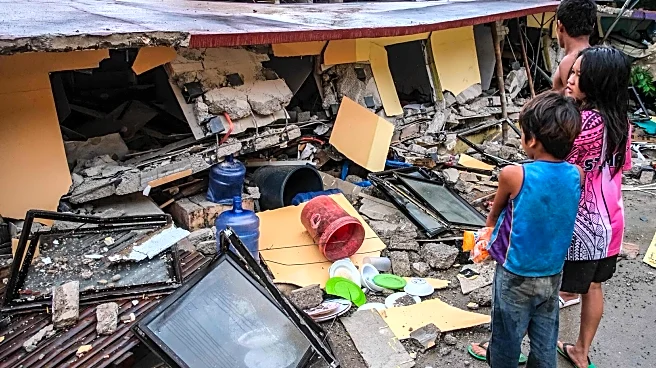What's Happening?
A powerful earthquake with a magnitude of 6.9 struck the central Philippines, particularly affecting the province of Cebu. The earthquake resulted in the collapse of buildings, leading to at least 69 fatalities and over 150 injuries. The Philippine Institute of Volcanology and Seismology reported the quake occurred just before 10 p.m. local time, followed by several aftershocks. The National Disaster Risk Reduction and Management Council confirmed significant infrastructure damage, including 22 structures, three bridges, and one road rendered impassable.
Why It's Important?
The earthquake's impact on Cebu, a densely populated province, underscores the region's vulnerability to seismic activity. The loss of life and infrastructure damage pose immediate challenges for emergency response and recovery efforts. The disaster highlights the need for robust building codes and disaster preparedness measures to mitigate the effects of future earthquakes. The economic implications are significant, as infrastructure damage can disrupt local economies and necessitate substantial rebuilding efforts.
What's Next?
Emergency services are likely to focus on search and rescue operations, providing medical care to the injured, and assessing the full extent of the damage. The government may seek international assistance to support recovery efforts. Long-term, there may be increased emphasis on improving earthquake preparedness and infrastructure resilience to reduce the impact of future seismic events.











